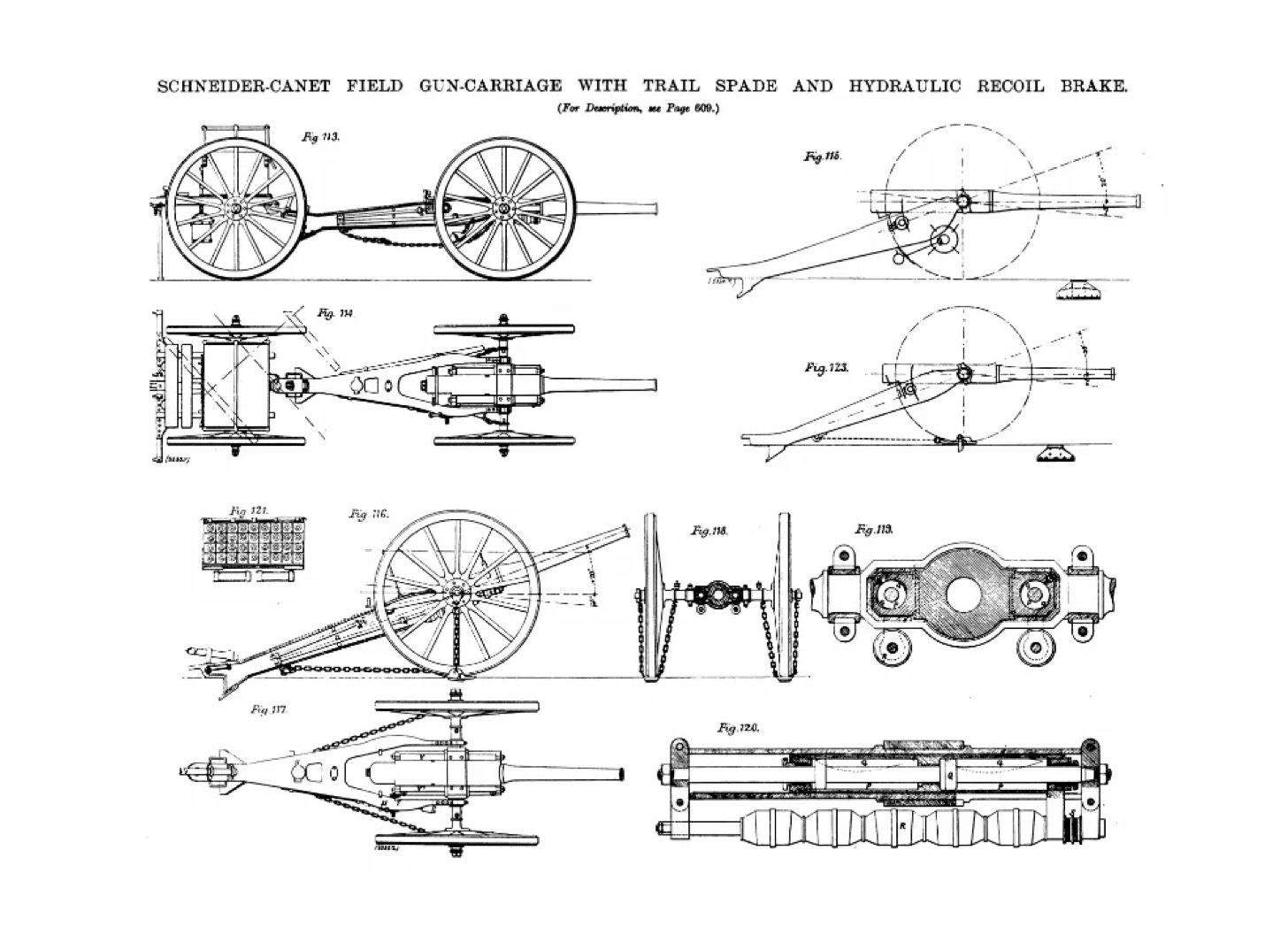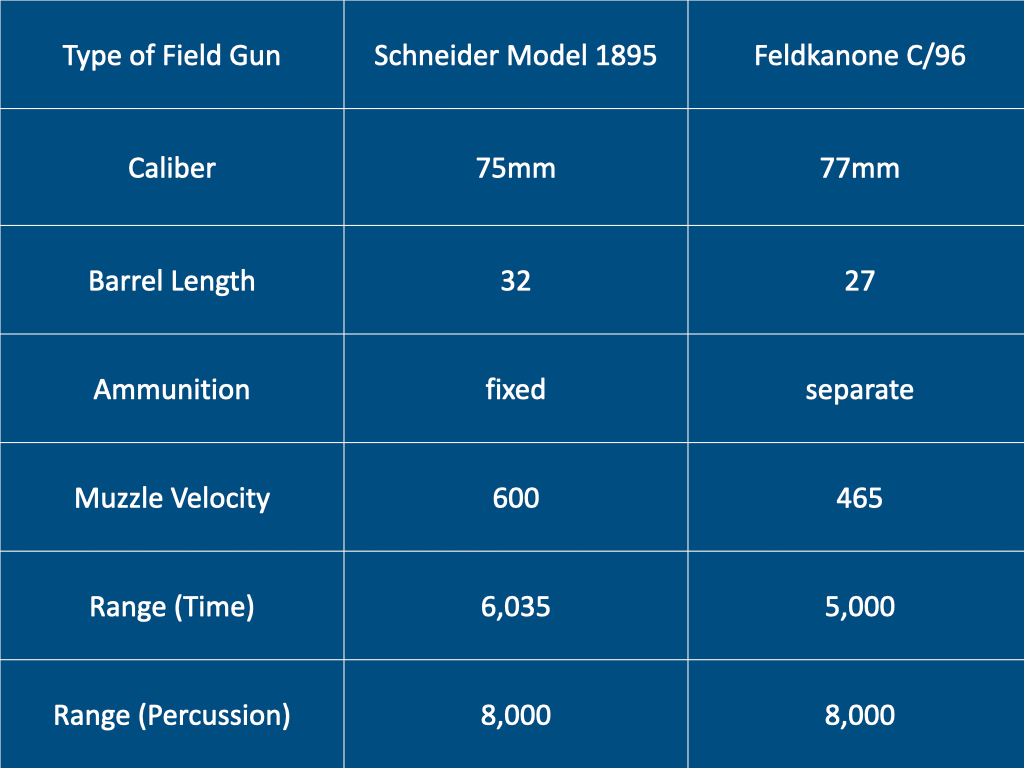Schneider-Canet Field Gun (Model 1895)
Edwardian Armies
The 75mm field gun that the French firm of Schneider and Company put on the market in 1895 bore several names. Some people named it after the location of the factory where it was built, the town of Le Creusot in the Burgundy region of France. Others gave it the surname of its inventor, Gustave Canet (1846-1913).
Whether designated as the “Schneider,” the “Creusot,” or the “Schneider-Canet,” this field piece, made famous by the South African gunners who used it in the Second Anglo-Boer War (1899-1902) was a remarkably modern weapon. Indeed, while its on-carriage recoil-absorbing mechanism did not eliminate all of the “push back” generated by the act of firing, it had much in common with field guns of types introduced in the first decade of the twentieth century. In particular, it was a high-velocity weapon, optimized for the firing of shrapnel shells, that, thanks to its recoil mechanism and the use of fixed ammunition, enjoyed a remarkably high rate of fire.
The virtues of the Model 1895 Schneider field gun become apparent when the weapon is compared to a field gun of the same class introduced in 1896, the German 77mm field gun, Model 1896. (The chart does not show the advantage enjoyed by the Schneider in rate-of-fire. The reason for this is the difference in the way that various authorities calculate this figure. Where some count aimed shots, others fail to factor in the time needed to regain point-of-aim after each round fired.)
Sources:
Willy Heydenreich, Das Moderne Feldgeschütz (Leipzig: Göschen, 1906), Volume 2, Foldout Table following page 153.
Darrell D. Hall, “Guns in South Africa 1899-1902” Military History Journal, Volume 2 (1971), Number 2
The detailed drawings come from Engineering, Volume 69 (1900), page 610.
Notes:
The figure given by Major Hall for the range of percussion-fuzed shells fired by the Schneider-Canet gun assumes the use of the heavier Krupp shell. The figure used in the table in this article presumes the use of the light shell supplied by Schneider.
In 1896, Schneider introduced a 75mm field gun that mated the barrel assembly of the Model 1895 piece to a carriage with a telescoping trail. For a thorough description of this latter weapon, see “Matériel de Campagne à Tir Rapide: Système Canet, Modèle 1896” Revue d’Artillerie, November 1896, pages 101-121.





